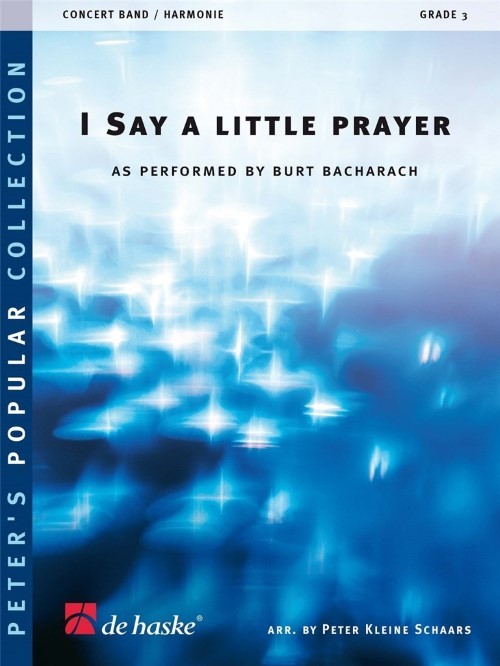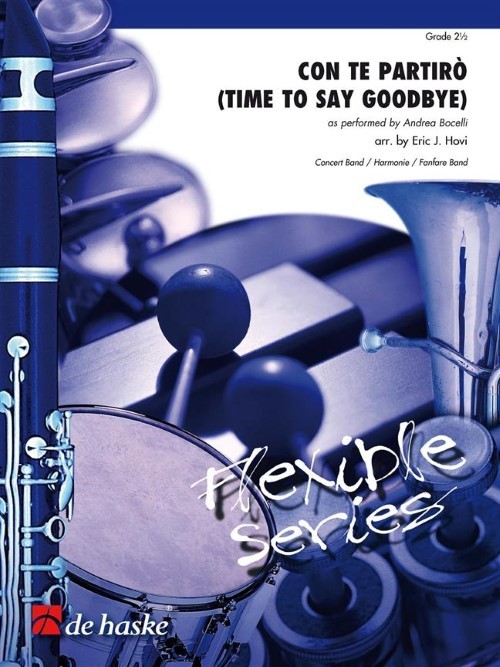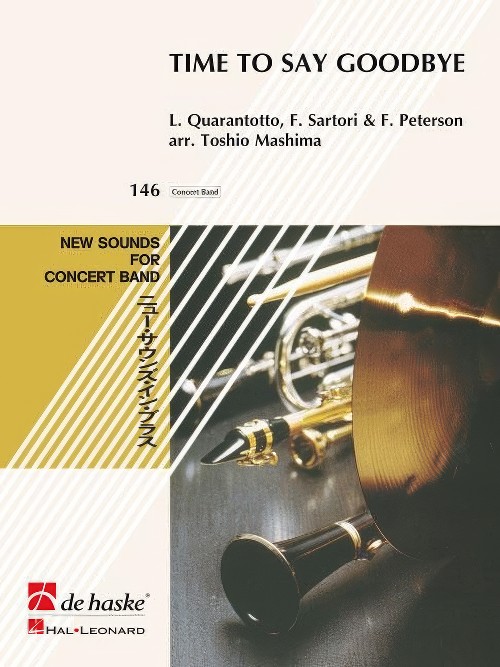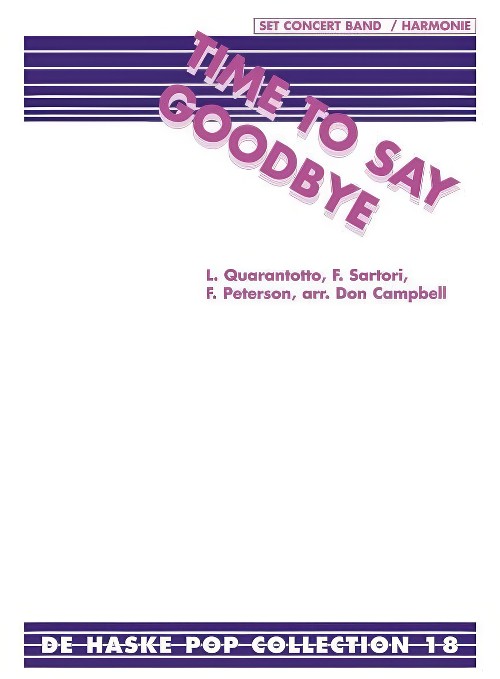Results
-
 £89.99
£89.99 -
 £100.00
£100.00Time to say Goodbye/Con te partir - Andrea Bocelli
Estimated dispatch 7-14 working days
-
 £132.10
£132.10Time to say Goodbye - Andrea Bocelli
Estimated dispatch 7-14 working days
-
 £61.00
£61.00Con Te Partiro (Time To Say Goodbye) - Francesco Sartori/Quarantotto
Estimated dispatch 7-14 working days
-
 £84.99
£84.99I Say a Little Prayer (Concert Band - Score and Parts) - Schaars, Peter Kleine
This bittersweet song from 1967 is a real classic, partly due to the rendition by two queens of soul, Dionne Warwick and later also Aretha Franklin. The theme was very topical at the time: A woman is concerned about her husband fighting in the Vietnam War, and thinks about him during her day-to-day worries. Top arranger Peter Kleine Schaars created a tasteful and carefully orchestrated version. His arrangement stays true to the original colour and feel of the song, and, as a grade 3 piece, is still perfectly playable for most bands. Duration: 2.30
Estimated dispatch 7-14 working days
-
 £69.99
£69.99Con Te Partiro (Time to Say Goodbye) (Flexible Ensemble - Score and Parts) - Hovi, Eric J.
Who doesn't know the Italian tenor Andrea Bocelli and his signature song Con te Partiro that made him world famous? This colourful version is accessible for smaller, mixed-ability ensembles, and provides an enjoyable part for all players. This arrangement will bring colour to your concert and is great fun to play! Duration: 3.45
Estimated dispatch 7-14 working days
-
 £104.99
£104.99Time To Say Goodbye (Concert Band - Score and Parts) - Mashima, Toshio
This beautiful duet was an appropriate way to mark the end of Henry Maske's career and simultaneously introduce Andrea Bocelli to the international music scene. His collaboration with Sarah Brightman resulted in an unforgettable performance. Perfect for ending or providing an intimate moment during your concert, this arrangement exhibits the high standards the New Sounds for Concert Band series is known for.Duration: 4:30
Estimated dispatch 7-14 working days
-
 £104.99
£104.99Time to Say Goodbye (Con te Partiro) (Concert Band - Score and Parts) - Campbell, Don
Duration: 4:00
Estimated dispatch 7-14 working days
-
 £76.99
£76.99Hard to Say I'm Sorry (Concert Band - Score and Parts) - Cetera & Foster - Oud, Thijs
The atmospheric ballad with it's swinging finale will bring a touch of emotion to any concert.Duration: 5.00
Estimated dispatch 7-14 working days
-
 £89.99
£89.99
